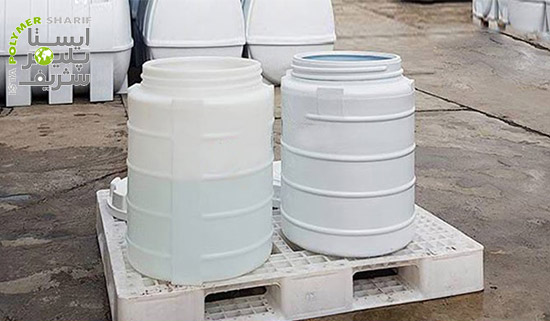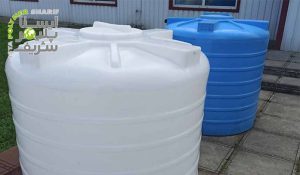Plastic tanks are essential for storing liquids, including potable and drinking water. Various types of water tanks are produced in different designs and layers, such as single-layer, double-layer, triple-layer, and even more. Each type of tank has unique features and specific applications. In this article, we will specifically discuss single-layer and triple-layer tanks. Our goal is to familiarize you with the differences between these two types. If you are interested in learning more about this topic, we recommend following the provided information to the end.
Single-Layer Tanks

Single-layer tanks are those that do not have inner or middle layers and are made up of only one layer. These tanks are produced completely transparent, allowing the liquid level inside the tank to be clearly visible from the outside. These types of tanks are mostly used for storing liquids other than drinking water because single-layer tanks easily allow sunlight to pass through, which can cause the water to taste and smell bad.
Some manufacturers add UV stabilizers (masterbatch) to the composition of single-layer tanks to make them resistant to sunlight, thereby increasing their useful life. Despite these measures, if single-layer tanks without UV stabilizers are used to store drinking water in emergency situations, it is better to keep them in a dark and cool place.
Single-layer tanks are usually made of lightweight polyethylene polymer and are more affordable compared to other types of tanks. In terms of thickness and resistance, single-layer tanks do not differ significantly from multi-layer tanks. These tanks also exhibit complete resistance to weather conditions and UV radiation.
Despite all the features and advantages of single-layer tanks, they also have drawbacks, which distinguish them from triple-layer tanks. One of the most significant drawbacks is their vulnerability to severe mechanical impacts and their lack of resistance to direct flames. These tanks also allow sunlight to pass through, facilitating algae growth, which can be a breeding ground for anaerobic bacteria, ultimately causing the water inside to taste and smell bad. The use of these tanks for storing potable drinking water is only possible if they receive approval from the Food and Drug Administration.
Triple-Layer Tanks

Triple-layer tanks consist of outer, inner, and middle layers, each with different features and properties. The middle layer of these tanks is black and contains UV stabilizers. This layer does not affect the thickness or resistance of the tank but is included to add certain additives to the tank’s structure.
This layer prevents sunlight from entering the tank, thereby inhibiting the growth of algae inside the tank. Therefore, these tanks are more suitable for storing light-sensitive liquids such as drinking water and other liquid food items.
Like single-layer tanks, triple-layer tanks are typically made from polyethylene polymer. Triple-layer tanks can also be produced in various designs and colors. The price of a triple-layer tank is higher due to the longer production process compared to single-layer tanks. Additionally, because sunlight cannot penetrate these tanks, the liquid level inside is not visible from the outside.
Differences Between Single-Layer and Triple-Layer Tanks
As you know, one of the differences between these two types of tanks is the number of layers they are made of. Single-layer tanks are produced in transparent or white, while triple-layer tanks can be manufactured in various colors. Single-layer tanks allow sunlight to pass through and do not have anti-algae and antibacterial properties, unlike triple-layer tanks.
As mentioned earlier, single-layer tanks are more affordable than triple-layer tanks. Despite all the differences between single-layer and triple-layer tanks, it is not possible to establish the superiority of one over the other because each has its own specific functionality and features..
Therefore, by having sufficient information about single-layer and triple-layer tanks and understanding the differences between them, you can easily distinguish between the two. Other visual methods to differentiate between single-layer and triple-layer tanks include:
- Observing the shadow of your hand inside a single-layer tank
- The darkened space inside a triple-layer tank after closing its lid
- Seeing the level of contents inside a single-layer tank
Summary
Polyethylene tanks are used for storing various types of liquids and are produced in different layers. In this article, we briefly discussed single-layer and triple-layer tanks. We examined the functionality and features of each type of tank and highlighted the main differences between single-layer and triple-layer tanks, such as price, the number of layers, and more. We hope the information provided helps you make a better decision when purchasing these products.






